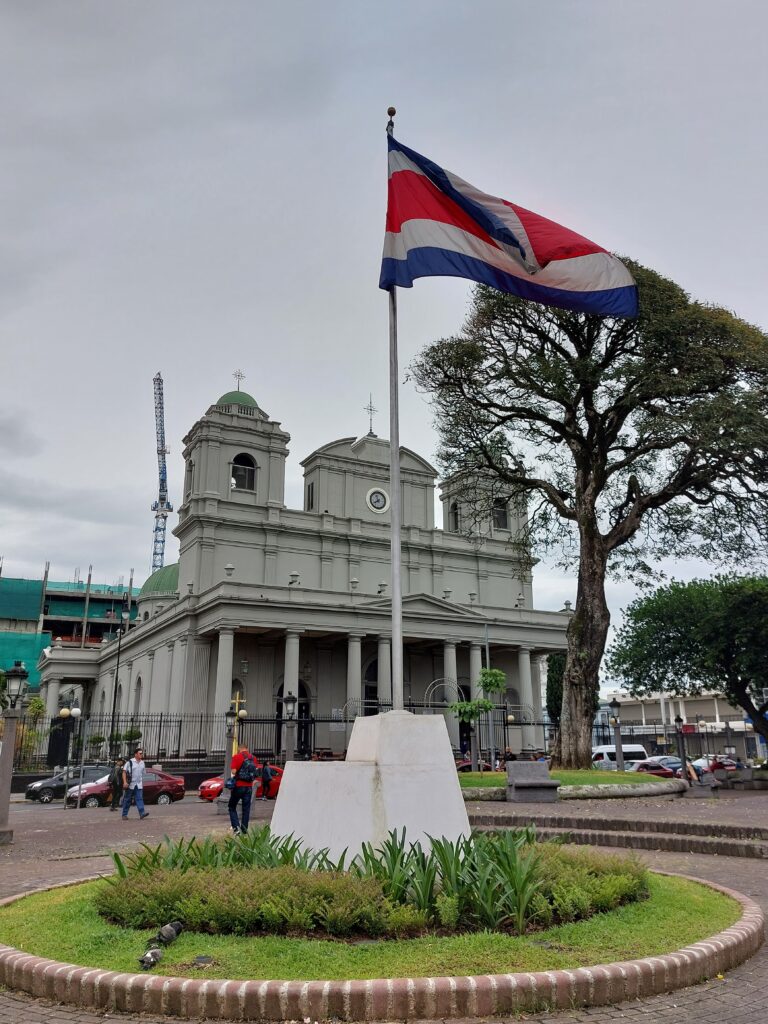Do you plan to visit Costa Rica, this small, yet stunning Central American nation, but you do not know what to expect? Don’t worry, I got you covered!
Below, I prepared a list of the most interesting facts you should know about Costa Rica, so planning your trip should get easier from this point on.
1. Budgetting for Costa Rica
Let’s start with the budget, one of the most important elements when planning a trip. I don’t want to start on a negative note, but Costa Rica is quite expensive.
At least it was more expensive than what I imagined Central America would be. In 3,5 weeks, I spent a little over £1,000. My budget included private accommodation (most of the time) and travel between places in private shuttles. It also included quite a few tours as well as food expenses and other unrelated travel expenses someone has when travelling long term.
Although I did stay in hostels too and did not eat at the restaurant every single day, my daily average spend was somewhere around £43.
I hope this will give you an idea of what to expect in terms of spending if you plan to visit Costa Rica.
2. How much time should you stay in Costa Rica?
Let’s continue by looking into how much time you should consider for visiting Costa Rica. For a regular holiday in Costa Rica, I would advise you to book anywhere between 2,5 to 3 weeks (if possible). This will give you enough time to visit the most important places in the country like:
- The capital San Jose
- The North province, including the hotspots La Fortuna & Monteverde
- The Pacific Coast, including the well-known Guanacaste Region, and the coastal towns like Jaco & Manuel Antonio
- The Caribbean Coast, including The Tortuguero National Park and Puerto Viejo
These are just the highlights. There is much more worth visiting in Costa Rica that can be added to the above list. And you are free to add more places if you have the time. But for someone who does not have that much time, the list above should be a good start for their itinerary.
3. The tap water in Costa Rica
An interesting fact about Costa Rica is that tap water is safe to drink. Yes, you read that right. Tap water is perfectly safe to drink in Costa Rica unless you are told otherwise. Yet, always check with the local people first before drinking tap water.
And pay extra attention if you have certain medical conditions or you have a sensitive gut. I was born and raised in Europe and used to tap water from back home. Yet, drinking tap water in Costa Rica was perfectly safe for me. I did not feel sick from drinking tap water in Costa Rica, but this might be different for you.
4. Pura Vida

Get used to hearing Pura Vida all the time. It was funny to hear everyone saying Pura Vida as a way to say hi, bye or anything else really.
Pura Vida is something you will hear a lot in Costa Rica. It means hi, bye, see you soon and many other things as the picture below confirms. Pura Vida is part of the local culture, and you should embrace it. A bit like hakuna matata only this is the Latin American version of it.
5. Costa Rica is an ideal destination for families with small children
Another interesting fact about Costa Rica is that it seemed an ideal destination for families with small children. I was surprised to meet quite a few families during the tours I booked. Because the country is safe compared to other countries in the region and tourism is quite a big industry, Costa Rica has become a good place to go on holiday with small children.
During my stay in Costa Rica, I saw many US and Argentinian families with children. Perhaps not that many Europeans because the journey can be quite long if you have small children, but there were definitely families with small children from the continent visiting Costa Rica.
In fact, Manuel Antonio seemed to be the perfect place to go on holiday with your family. There were many resorts, and they looked very well-equipped to host families with small children.
So if you are a family and need inspiration for your next trip, look into Costa Rica, it might become your next holiday destination.
6. The wildlife diversity in Costa Rica
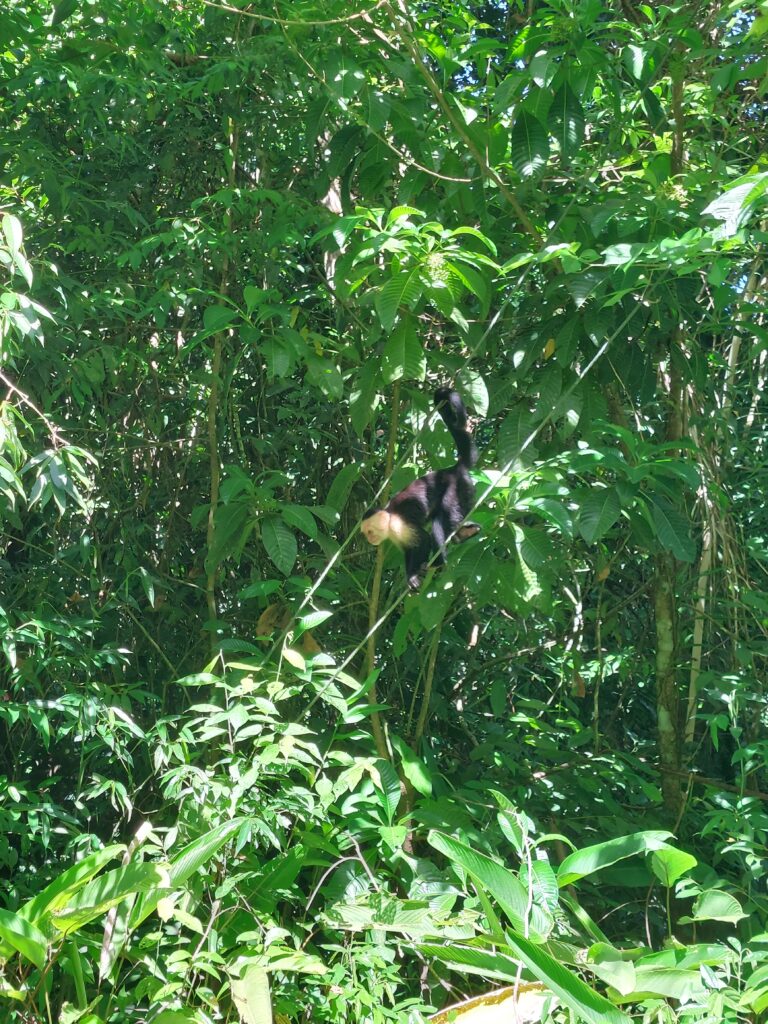
The wildlife is abundant in Costa Rica compared to Europe, where I never got woken up by an iguana eating her lunch just above my head. When you go to the beach, be careful as you might come across all sorts of creatures like iguanas, crabs etc.
In the beginning, I was afraid of them, but they seemed to mind their business if you kept your distance. Although they seemed used to human presence, after all, they are wild animals, so never get too close to them.
Learn to respect their space, and they won’t bother you either.
If you hike or go animal watching in any national park in Costa Rica, the most common advice you get is to not touch tree branches and leaves and mind your steps. That’s because Costa Rica’s rich wildlife is everywhere, and you might be touching a snake, a lizard or a poisonous plant.
It might sound scary for someone who has not interacted with much wildlife like it’s been my case so far, but you get used to it. In fact, the wildlife is something I enjoyed the most in Costa Rica.
The fact that wild animals are still very present in people’s lives here, and everyone seems to get along just fine was mindblowing for me. In my opinion, this is one of the most interesting facts about Costa Rica and something everyone should be mindful of before visiting the country.
7. Visiting Costa Rica in July
If you visit Costa Rica in July during the rainy season does not mean you will experience heavy rain every single day. Yes, it will rain, but in my experience, it usually happens in the afternoon.
Some regions do indeed experience more rain than others, but generally speaking, the coast is way dryer than other regions in the country.
When I booked my flight to Costa Rica, I knew I would visit the country halfway through the rainy season. I have to say that I was a little worried that the rain might stop me from doing things.
In fact, it has not been that bad. You can still do things during the rainy season. The only thing you need to keep in mind is to be flexible when planning outdoor activities because you cannot really predict when it will rain. Another thing you need to get ready for is getting used to getting wet. You will get wet if you are out hiking and it starts raining.
If you want to know more about visiting Costa Rica in July, I wrote an article about it:
Is July a good month to visit Costa Rica?
8. Going to the beach in July

On the same note, don’t be afraid to visit Costa Rica in July because the water is still warm enough to go for a swim everywhere in the country.
During my stay in Costa Rica, I swam in the north, on the Atlantic and the Caribbean coast. The temperature was perfect for swimming in all these places, and in fact, it feels much warmer because the humidity is high during this time of the year.
Even if you get wet from the rain, you dry quicker because the humidity is so high. Just bring some quick-dry clothes and enjoy this beautiful country. Your experience will be Pura Vida, as they say.
9. Where to stay in Costa Rica?
Usually, the touristy beach towns have everything you need from European/US stores to clothes, gadgets, food etc. The more you travel outside these areas, the more difficult it is to find things you are familiar with.
If your comfort is important to you, I suggest you stick to the touristy areas because that’s where you will find everything you need. Plus, if you travel to Costa Rica during the low season, there won’t be too many tourists around, and even the most popular places in Costa Rica will feel less crowded.
10. The island mentality
As someone who lived and worked all her adult time in Europe, you will find the Costa Rican much slower. Even the tour guides and the rest of the people working in the travel industry seem to move slower.
In the beginning, I used to find it extremely frustrating, but you’ll get used to it in the end. In Costa Rica, you will come across what they call the island mentality. It has much to do with their popular saying pura vida, as in relax the tour will start eventually 🙂
So next time you worry that your tour has not started yet, give them around 30 minutes before you go and ask. I learnt that the 15-minute rule does not apply here ;).
11. The Costa Rican Food
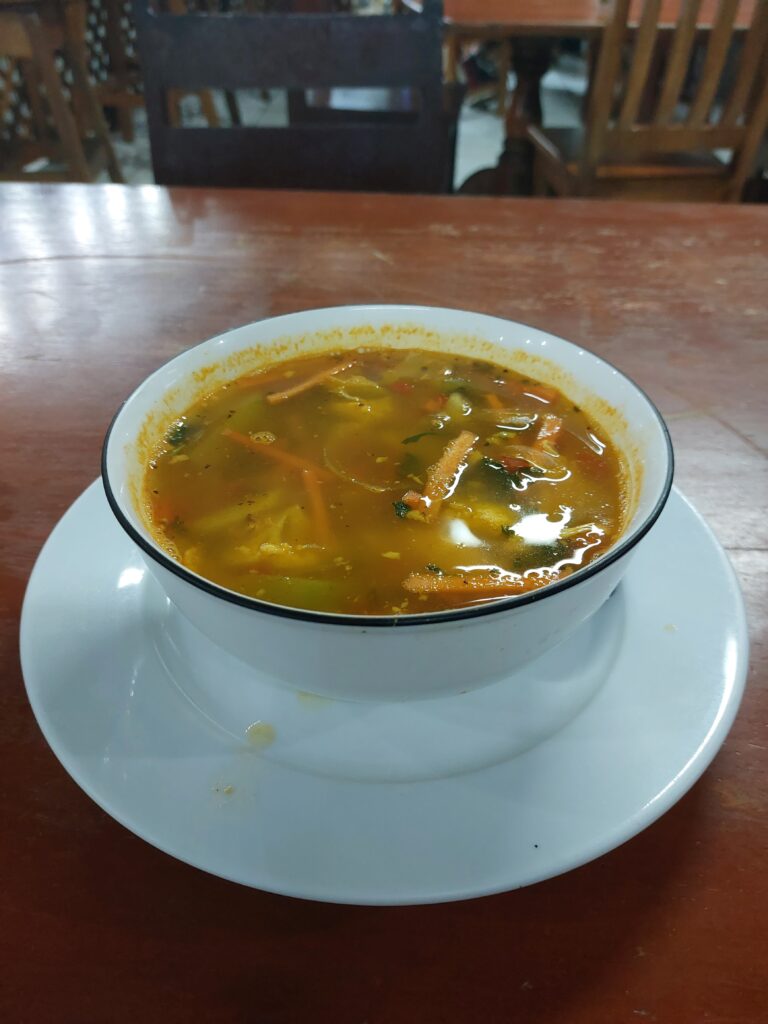
The food in Costa Rica is not spicy at all. For me, it was perfect, although the Mexicans I met kept complaining that it tastes a bit bland.
Based on what type of food you are used to back home, you will find Costa Rican food either bland or tasty. I am not a big fan of spicy food, and places like Mexico or India always forced me to push my limits.
Yet, I was surprised to discover that Costa Rican food is not spicy at all. If you like spicy food, you always have on the table salt, pepper, and some spicy sauce to add to your food, should you want to.
12. San Jose is affordable

After travelling the country, I realised that the accommodation in San Jose is much more affordable compared to other touristy areas.
This can be a good tip for budget travellers.
Finding affordable accommodation in the capital is understandable because San Jose, although is the capital city, is not such a touristy place at all.
Most people I met used San Jose to travel to places in Costa Rica. On average, people stay in San Jose for about 2 days before they move somewhere else.
13. Eat at a SODA restaurant
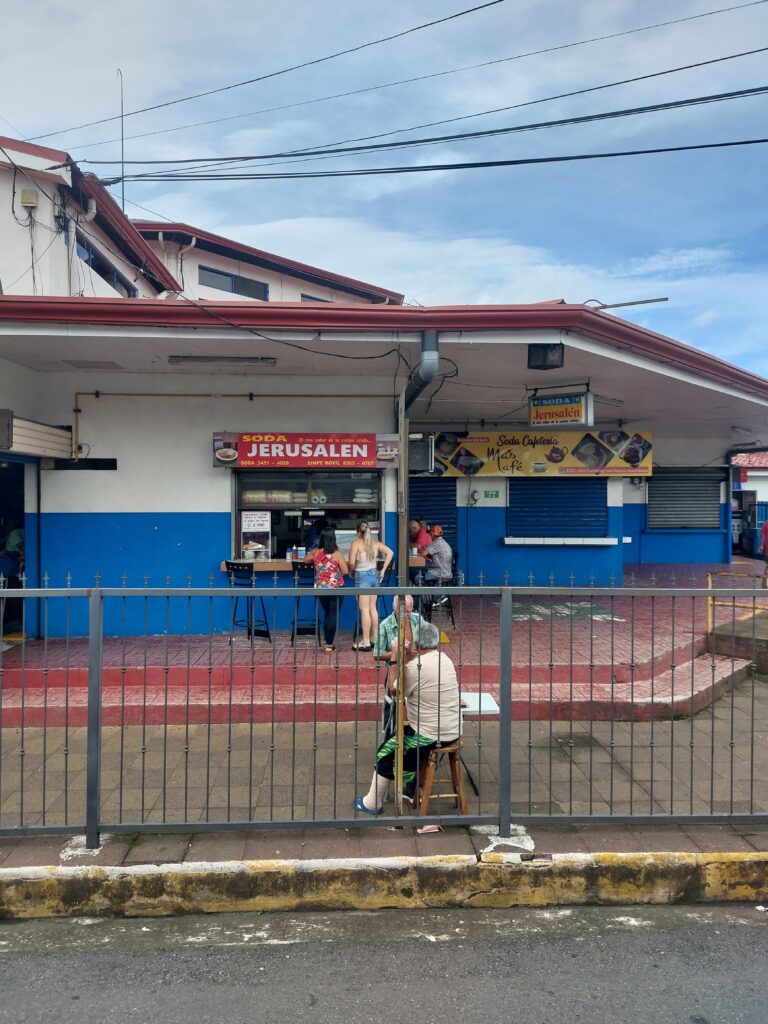
We talked about food a bit earlier, so if you want to try typical Costa Rican food, eat in places called SODA. They are pretty much everywhere. The best ones are where the most customers are, usually locals, so look for busy places.
Yet, I saw tourists eating at SODAs too. I tried them a few times and was happy with the menu. SODAs are typically less expensive than touristy restaurants. What I also like about SODAs is that the food is freshly cooked. They normally serve traditional Costa Rican food which is a combination of rice with some type of meat and cooked beans.
Yet, other SODAs even offer healthier options like salads or soups. Some others serve fast food too. Eating at a SODA should be part of getting to know the local culture and should be on your list when visiting Costa Rica.
14. Is Costa Rica card friendly?
Another interesting thing about Costa Rica is that you can visit the country almost cashless. Before coming to Costa Rica, I thought I would have a hard time paying by card. In fact, I hardly had to take out money while in the country.
I was surprised to discover that you can pay by card pretty much everywhere in Costa Rica. This is good because taking out money can be a pain. The withdrawal fee for foreign cards it’s quite high, almost $5 per transaction. That’s why I advise you against taking out money.
Another trick to save up money while in Costa Rica is to pay all your transactions in colones (the local currency). Although the country has a local currency called the colon, almost always people will ask you if you want to pay in American dollars (this happens more in the travel sector than anywhere else). You will always pay in colones in shops and supermarkets. Don’t choose to pay in American dollars because the exchange rate used is not advantageous for you. Always choose to pay in colones.
If you have a multi-currency card like the ones I use (Monzo & Revolut) always choose to pay in the local currency. You will be better off this way.
15. Watch out for Iguanas
I already mentioned the abundant wildlife Costa Rica has. Yet, I would like to mention specifically iguanas who live closer to humans than any other wild animals I saw in Costa Rica. You will see them so often in cities, crossing the street or staring at you from a tree that you will get used to them. They are like stray cats in Greece or stray dogs in Turkey.
I became very mindful of them during my stay in Costa Rica because I was afraid I would step on them while walking.
That’s why I want to highlight that you might see them quite a lot during your stay in Costa Rica. Try to respect their space and don’t disturb them too much. I saw tourists trying to take photos of them, and they ended up scaring them away. We don’t want that. We need to learn to live in harmony with these creatures without disturbing them too much.
16. The doggy bag culture
Something I really appreciate about Costa Rica is the doggy bag culture and the fact that most hostels give you the choice to store your food in the fridge.
It’s a good practice to encourage sustainable tourism. Before travelling to Costa Rica, I did not know what to expect in terms of sustainability & ecotourism. But I was pleasantly surprised to find out the country is promoting sustainable tourism through these measures.
17. Eating out by yourself
As a solo traveller, you won’t have a hard time eating out by yourself. I often saw people eating out alone. I did it myself on several occasions and never got any weird looks.
Costa Rica is a good destination for solo travellers, including female solo travellers. In the beginning, I was reluctant to eat out by myself. Yet, I gave it a try and had a nice experience.
You don’t get weird looks, and the restaurant staff won’t mind getting you a table, although you are by yourself. The conclusion is that Costa Rica is actually a good country to travel to as a solo traveller.
18. The public transport is bad
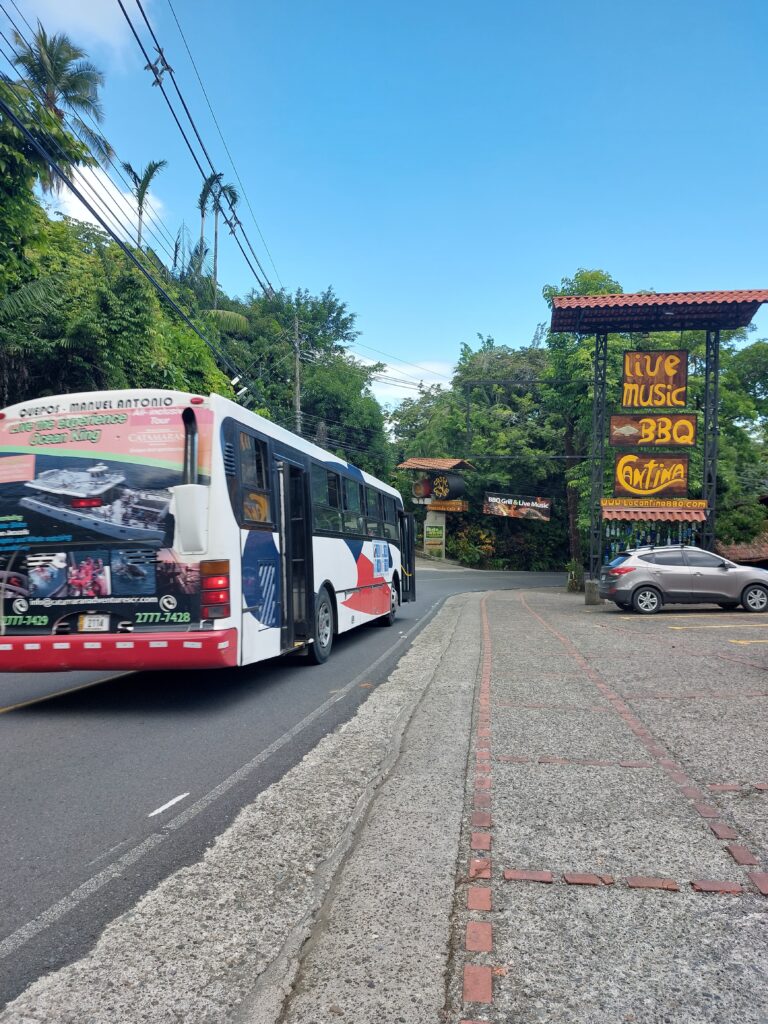
Sorry, but I have to say it, the public transport in Costa Rica isn’t great. It’s fine if one of your destinations is San Jose since the capital it’s connected to all places around the country. But if you want to travel between locations which don’t include the capital city, you will most probably need to change buses and travel through San Jose on your way to the new location.
Having to travel back to San Jose to get another bus is most of the time a waste of your time. And a regular 2h journey can take 5h instead because you need to change buses.
On a positive note, public transport in Costa Rica is way cheaper than private shuttles. So if you have time to spare and don’t mind changing several buses knowing that you will save up significantly, then using public transport in Costa Rica is a good way to go.
19. Restrictive smoking rules
Costa Rica has one of the most restrictive policies on smoking in public places. Personally, I don’t smoke, but the Europeans I met who smoked complained that Costa Rica is more restrictive than Europe when it comes to places where smoking is allowed. So if you are a smoker, make sure you know where you are allowed to smoke because the fines are quite high.
I found this to be one of the most interesting things about Costa Rica because it never crossed my mind that this Central American nation would be stricter about smoking in public places than other developed nations.
20. Book good-rated accommodation
Make sure you book accommodation with a good rating. I was told Costa Rica has numerous poisonous spiders, and poorly rated places might not give proper attention to disinfection. Don’t ruin your holidays by saving a few pounds. I only stayed in places (hostels & private rooms) rated at least 8 on booking.com and was perfectly safe.
Saying this though, I did come across cockroaches twice and reported the incident immediately. I was told there are more during the rainy season, and although owners do disinfect, they cannot keep up with the insects. I don’t know if this was true or not, but these were the only animals I came across. They will usually come out through the bathroom pipes.
If I compare this to Panama City (where I currently write this blog post), where it also rains a lot, I must say that I have not seen any cockroaches and stayed in 2 hostels so far. It might be that in Costa Rica their approach to these insects is more relaxed.
21. Best month to avoid the crowd
If you are a backpacker travelling to Costa Rica in July, you will be surprised to notice how empty the hostel dorms are. I would often book a bunk bed in a 4 or 6 beds female dorm and end up sharing the room with only another 2 or 3 female travellers.
Plus, the good-rated hostels usually have an outdoor pool which is nice to have access to more so if you are not staying somewhere by the coast.
I enjoyed staying in half-full hostels. There were still people around to socialise, but it did not feel that crowdy. The bathrooms were free every time I used them, and the kitchen space was enough for everybody.
In conclusion, if you want to avoid the crowd, July is one of the best months to do so.
22. Safety in Costa Rica
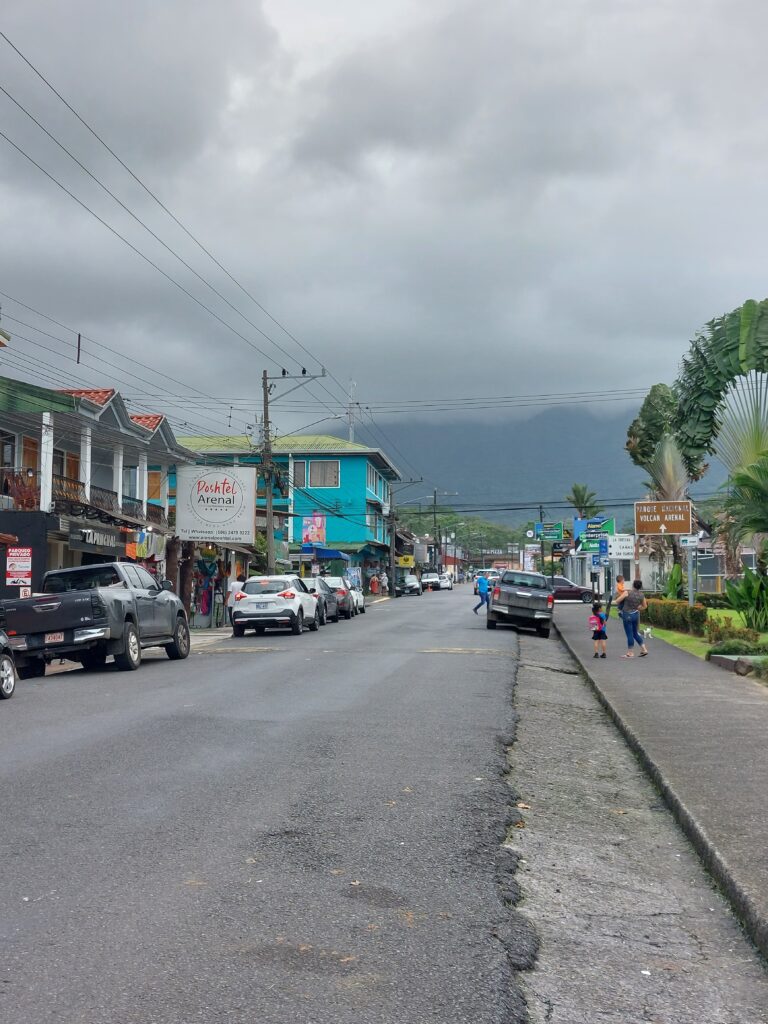
Latin America has always had the reputation of being unsafe, especially among Europeans. After 3,5 weeks in Costa Rica, I can say that the country is perfectly safe during day time.
I walked by myself everywhere, including crowded markets, and nobody harassed or tried to rob me. I went to the beach all by myself and never had a bad experience. Therefore, I can say that Costa Rica is a safe destination for solo female travellers.
Saying that though, it can be different if you venture out all by yourself after 7 pm. As a woman, you can experience catcalling. If you go out, make sure you do it in the group. You can still walk for short distances, but make sure you are always with a group of people. For longer distances, call an Uber. They are perfectly safe in Costa Rica.
This is my list of the 22 interesting facts about Costa Rica I thought would be useful for you to know about. If there is anything I missed, do let me know in the comments below. I am interested in what else you would like to know about this beautiful country.

